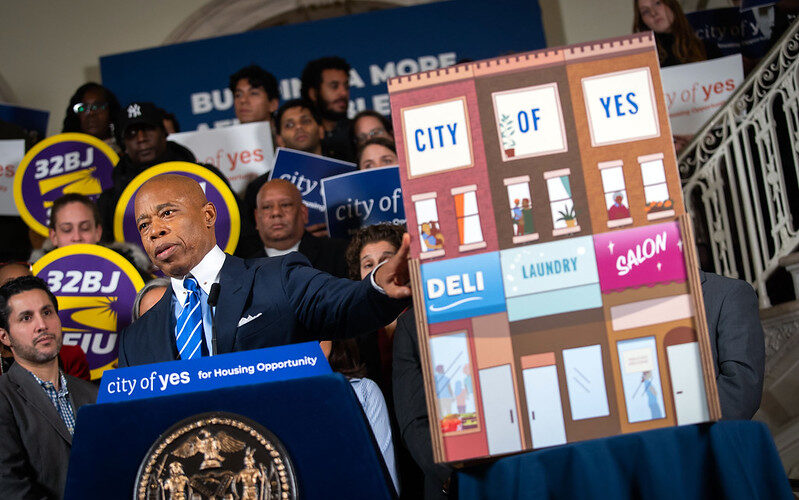The City Council members, state legislators, civic associations and others who have sued the city over Mayor Adams’ excellent City of Yes housing initiative are abusing the oft-abused argument that the agonizing slow and deliberate process did not go through appropriate environmental review. Hooey.
Once and future mayoral contender Curtis Sliwa and others backing the lawsuit are claiming “environmental impact,” but the truth is that they oppose the building of more housing in every neighborhood, which the zoning change allows. This environmental worry seems to us a concern that only arises when it can be usefully deployed to combat against policies that these folks take issue with.
Hopefully, this case will not delay and distract from the necessary work of beefing up the city’s housing stock. What the plaintiffs and their supporters are unlikely to discuss much publicly is that many of the plan’s provisions are returns to common-sense building rules that were in place for much of the city’s growth into its modern metropolis, before anti-density agitators began getting their way around the mid-century, and without which New York City would be unrecognizable.
It takes quite the overactive imagination to describe having office spaces more easily converted to housing and letting new residential development be slightly larger if it includes more affordable housing as having New Yorkers get “their neighborhoods destroyed,” as Councilwoman Joann Ariola puts it. The plan is estimated to create 82,000 additional units of housing across the five boroughs over the next 15 years — a laudable step towards easing our housing crisis but hardly a complete reinvention of a city that has grown by some 3 million people in the last 100 years.
What will actually destroy New York is having the middle class hollowed out by unaffordable rent in addition to other high costs of living, which is a trend that will only accelerate the longer we refuse to contend with this housing emergency. Neighborhood character won’t matter much if those neighbors themselves are pushed out, not to mention that our entire city’s economy will stall out if middle-income workers use their economic flexibility to take their talents elsewhere.
We won’t pretend that this emergency has just one cause. There are elements of available housing not being listed out of some economic calculation by landlords and property managers. Landlords across the country have been accused by the Justice Department of using sophisticated tools to collude on rents. Our system of rent stabilization heavily discourages renters in those coveted units from ever leaving, even if another apartment might make sense for their family’s needs.
Yet all of these issues are merely exacerbating what is and always has been the core, unavoidable problem: we just don’t have enough stock to meet demand. All other solutions, involving property tax reform, addressing high costs of materials and construction and so on will not work if not paired with the simple imperative to make it easier to build more housing so that longtime residents and newcomers alike aren’t competing for the same dwindling stock. This lawsuit’s backers won’t like it, but that’s what New York needs.








